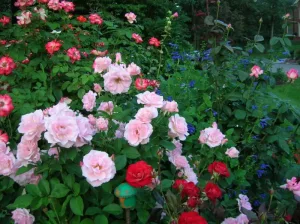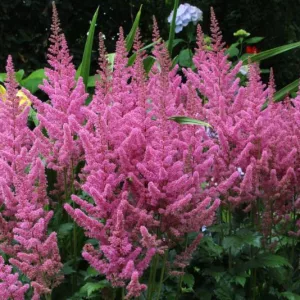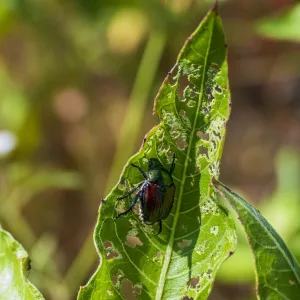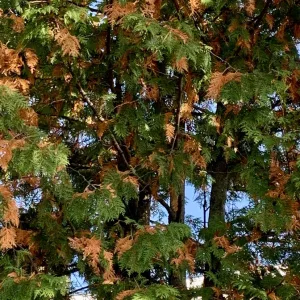As I was walking through the nursery today, I took note of all the beautiful, hardy rose bushes available for gardeners these days. There were so many new varieties to choose from. As I like to say, “These aren’t your grannies’ bloomers!”
When I was out in my own garden last week, I was very happy to see that the quite mature shrub rose that I cut back drastically and transplanted last fall is budding nicely! It is a very fragrant, large variety Called Therese Bugnet, that had to move as she had outgrown her spot in the garden beside my patio. Last summer it was reaching out and snagging anyone trying to walk by!
I still do get asked a lot of questions about growing roses. There are so many different types on the market these days, that if you don’t understand the basic difference between a hybrid variety and a hardy rose, success may be elusive.
Since growing roses tends to be a fair bit of work, in my opinion, they aren’t worth growing unless the flowers have a wonderful fragrance! Over the years of hybridizing roses, growers have been after that perfect bloom: the best colour, the best form, disease resistance and so on. Many times, in the quest for perfection, the gorgeous fragrance of the bloom has been lost.
Hybrid roses, that include Tea, Floribunda and Grandiflora varieties, are not truly hardy for our cold northern winters. In late fall they need to be surrounded with a rose collar and hilled with compost or soil. This allows the crown of the plant to freeze solid for winter and not thaw until spring. The repeated freeze/thaw cycle is what kills the tender rose.
It is especially difficult to keep hybrid climbing roses alive during severe winters. They often die and the shoots that emerge from below the graft are vigorous growers with little or no flowers. One solution would be to replace hybrid climbers that have ‘gone wild’ with a hardy rose variety.
Hardy shrub roses are a much safer choice for our area. There are now many types to choose from, not just the old fashioned wild, shrubby roses of days gone by. They come in all shapes, sizes, flower colours and flower types. There are miniatures, carpet spreaders, modestly sized shrubs, large shrubs that make good border or hedge plants and even hardy climbers.
Whether you are looking for fragrant blooms, tiny clusters of flowers, singles, doubles or even just nice rose hips to feed the birds in winter, there will be a hardy rose to suit your need.
All roses prefer full sun and a well drained soil. They will survive in part shade but will not produce as many flowers.
Use lots of compost when planting roses. They like lots of organic material around their roots. Be sure to feed them regularly with a fertilizer specifically formulated for roses. We want our roses to bloom profusely, so they will need the energy from fertilizer to keep on producing new flower buds.
Unfortunately roses are prone to attack from many insects and diseases. Keep a close eye out for aphids and spray insecticidal soap to combat this pest. You might want to keep a product called 3-in-1 on hand. It is a combination of insecticidal soap to control insects and the fungicide sulphur to combat disease. Some roses are susceptible to the diseases Black Spot and Powdery Mildew. Sulphur will help with this.
You can also plant any member of the onion family, such as chives, with your roses to help keep aphids at bay. Just be sure to remove spent flowers when they go to seed or your garden will be overrun with chive seedlings!




